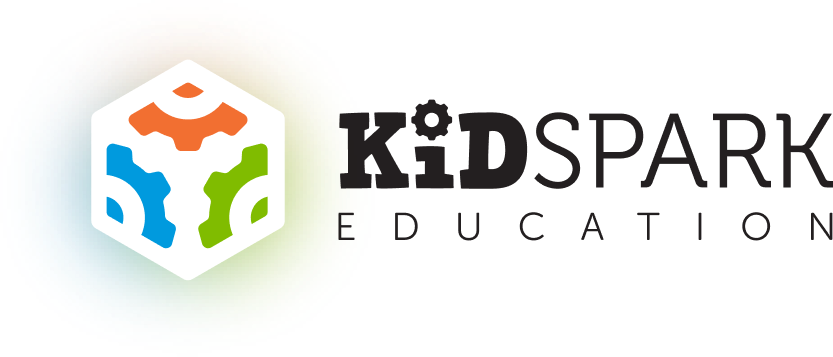
How to inspire confident STEM learners, engage middle school students in hands-on learning activities, and other resources for middle school STEM teachers.
The middle school years mark the transition from elementary school to high school. In these few formative years, students transition from a single teacher to multiple teachers, from general studies to more focused subjects, and from a class of peers to multiple classes with numerous peers.
These transitions form the background of their STEM education and depending on how well a student adjusts, can influence the rest of their educational career.
STEM in middle school gives students opportunities to dive deeper into STEM subjects and explore more challenging concepts. Students at the middle school level can be introduced to complex engineering, robotics, prototyping, intermediate mathematics, computer science, and more.
Creating a middle school STEM program where students can thrive is essential to inspiring the next generation of STEM leaders.
In this article, we’ll cover:
- Why building STEM identity in middle school is so important (and how to do it)
- Middle school STEM activities that are engaging, hands-on, and designed to be challenging yet fun
- How to find the right STEM curriculum for your middle school
Ready to lead confident STEM students? Let’s jump in.
Building STEM Identity in Middle School
Once students reach middle school, they typically have a solid foundation and familiarity across most school subjects and now have the opportunity to explore those subjects in-depth. New concepts, courses, and interests quickly evolve alongside budding social lives that can also potentially affect students’ academic success.
Professionals in school counseling and psychotherapy have noted the “drops in confidence, performance, and academic self-identity” that middle schoolers face during these years of early adolescence, which is why strong STEM mentors are more necessary than ever in middle schools.
What is STEM Identity?
STEM identity describes how an individual sees themselves within the fields of science, technology, engineering, and mathematics.
Some middle school students may have had early and sustained exposure to STEM subjects at the elementary level and come into their middle school STEM classes with confidence, curiosity, and ambitions to pursue a career in STEM. Others may feel like they’ve already struggled with science or mathematics earlier in their academic careers and that they’re “just not a math person.”
Many students exist somewhere within the spectrum when reaching middle school and can shift quickly and dramatically through social pressure, class difficulty, teacher influence, or any combination of the many changes happening at this time.
The great news is that STEM identity is not fixed! Students of all ages can build their STEM identities through mentorship, engaging and fun STEM activities, and positive learning experiences that build their confidence and curiosity in STEM subjects.

How to Build STEM Identity in Middle Schoolers
In middle school, students need engaging activities that activate their curiosity and challenge them in new ways. They also look for activities that are relevant to their lives, as in—How does this apply to the REAL world?
Here are a few ways to build and encourage STEM identity in middle school students:
- STEM Mentors
For students without a strong connection to STEM subjects, a mentor can make all the difference. Positively reinforcing students’ efforts, encouraging them to approach new challenges, and celebrating their successes can build better STEM identities and inspire students with the confidence they need to continue their own pursuit of STEM subjects.
STEM mentors also play a powerful role in introducing diversity within STEM. Our schoolbooks, media influences, and communities might portray a limited view of who traditionally plays a role in science, technology, engineering, or math. Introducing students to a diverse array of STEM mentors from underrepresented groups helps students of all backgrounds, genders, and abilities see themselves as future leaders in the world of STEM.
- Diverse Challenges
Building STEM identity includes keeping students engaged with new STEM activities while keeping them at their learning edge.
What is the learning edge? When we are faced with new concepts that are too challenging, we often experience feelings of frustration, anxiety, or confusion. The learning edge is a place within our comfort zone of learning that provides just enough of a challenge to be exciting and fun without posing too large a challenge to be discouraging.
Middle school students who are approached with too many challenges beyond their learning edge might handle these feelings by withdrawing, giving up, or acting out in other ways that prevent them from learning. To continue to build their STEM identity, students need diverse challenges that keep them on their learning edge.
- Engaging STEM Activities
All students, but especially middle school students, are interested to know how a classroom lesson applies to the real world. Are they really going to use math outside of school? When will they ever need these scientific facts after graduation?
A great way to preemptively answer these types of questions is by introducing engaging hands-on STEM activities that immediately immerse these subjects into the real world. Rather than reading and recitation, students get to see the real-world applications of STEM concepts and stay engaged while having fun in the classroom.

Middle School STEM Activities
With these helpful tips on supporting middle schoolers on their STEM journey, let’s explore some considerations and ideas for STEM activities in the middle school classroom.
Science
Science doesn’t have to be all worksheets and balancing electrons. Have fun with hands-on STEM activities for your middle school students. Science builds critical thinking, problem solving, analytical thinking, and experimentation in students. Keep it fun by relating each subject to the real world and letting students do some experimenting of their own.
- Scientific Challenges
To encourage middle schoolers to explore concepts and experiment on their own, allow ample time for scientific challenges in the classroom. This might include letting students design their own science experiments using the scientific method, solving a mystery or hypothesis in groups or as a class, or exercising students divergent thinking by encouraging them to find as many creative solutions to solve a problem.
Scientific challenges are often built into curriculum activities (like Kid Spark’s STEM comprehensive programs) where students can apply a convergent learning skill they’ve just learned and can apply it to a new problem, finding numerous creative solutions.
Challenges can also be constructed by teachers themselves, adding a game element or creative element to a scientific concept to move beyond memorization and into hands-on learning.
- Tie in the latest science news
There’s no better way to highlight a science lesson’s relevance than to directly tie into what’s happening in the world of science today.
NASA provides helpful professional courses for educators K-12, online STEM toolkits, and STEM lesson plans on their STEM engagement website. Here, you can find several different resources for both teachers and students to explore STEM subjects related to what’s currently happening in science news.
Technology
Middle school students are especially interested in technologies that are relevant. With the fast pace of technological advancements, this can be a challenge for many teachers to find new ways to engage students in technology-focused STEM activities. Here are a couple of ideas for the classroom in 2023:
- Leverage what they already know: computers
Middle schoolers are already well-versed in computers, and might already be familiar with computer science (CS) and coding on their own. Regardless of their familiarity, the application of computer science is something that is likely already aligned with their interests.
Google for Education offers resources for K-12 educators and CS activities for students in the classroom. The middle school level is a great time to introduce these concepts and provide creative activities for students to explore computer science.

- Connect technology to the real world
In one unit of Kid Spark’s middle school STEM program, students build an airplane model, then design and 3D print their own propeller. Over the course of multiple lessons, students learn to navigate a CAD system, design a three-dimensional prototype, and eventually print their custom airplane propeller.
This process connects modern technology to a hands-on learning activity with both convergent and divergent activities included. Complete with comprehensive lesson plans, student workbooks, video tutorials, and unit assessments, teachers have all the tools they need for an engaging integrated STEM activity that keeps middle school students participating.
Engineering
It’s going to take more than legos to get middle schoolers engaged in engineering. Luckily, there are several ways to introduce more complex engineering schools that keep students challenged and at their learning edge.
- Think “movement”
Flying rockets, speeding soapbox cars, and engineering a soft landing to keep an egg intact are all examples of hands-on engineering activities for middle school. Exploring the concepts of inertia, velocity, and acceleration opens up a fascinating world of learning activities that combines both convergent and divergent learning.
When approaching engineering concepts like these in text, try to find a physical example to illustrate the concept in the classroom. If you or your students are limited in supplies or resources, consider participating in one hands-on activity as a class, dividing students into groups, or using recycled materials to illustrate these engineering concepts.
- How things work
Our natural curiosity enjoys learning about how things work. Introducing the inner workings of engineering can make students see the world in an entirely new way. So how do we explore these concepts?
Structured engineering lesson plans with hands-on learning activities are a great way to introduce simple and complex mechanisms and machines. Because of the sequential nature of engineering concepts, we recommend a more structured and progressive approach to introduce new concepts, then let them build upon each other until students have a comprehensive understanding of how things work and can apply a variety of engineering principles to a single problem on their own.
This is best seen in our middle school STEM program where students work with reusable engineering components to build simple machines like levers, wheels, screws, and pulleys then move into compound machines with motors, motions, and gears.
For a sneak peek at what these lesson plans look like, click here.
Mathematics
Middle schoolers don’t typically enjoy the two-dimensional world of math on paper. To make mathematics fun and relevant, try to incorporate hands-on learning activities where students can apply their math knowledge to real-world problems, like:
- Geometry with their own engineered models
In a simple machines lesson of Kid Spark’s 6th-8th Grade Stem Program, students assemble a screw and learn how to calculate its mechanical advantage by measuring the different attributes of a circle. Through this hands-on activity, students have three-dimensional models to understand radius, diameter, and circumference, how to measure each, and how each makes a difference in the mechanical advantage of a screw.
By combining a real-world application and hands-on activity, this mathematical lesson comes to life and gives students an engaging STEM experience that is more memorable and impactful than measuring shapes in a textbook.
- Baking with fractions and ratios
Following a baking recipe provides a fun (and delicious) way to explore fractions, ratios, and conversions. Different variations of mathematical baking lessons might include following a no-bake recipe together as a class, having each student bring a recipe to convert and scale to then bake and share with the class, or forming groups of students to work together on a single recipe.
A real-world application of these mathematical concepts helps further cement the lessons of measurement, scale, ratios, and conversions while providing students with a fun and engaging activity.

Bring Kid Spark Education’s STEM Program to Your Middle School
Are you looking for an all-in-one solution for your middle school STEM program? Kid Spark Education can help plan your program today.
At Kid Spark, we believe that accessibility and consistency to STEM education closes the divide in STEM inequities. With our comprehensive and progressive STEM programs from Pre-K through Grade 8, we provide all the tools you need as an educator including curriculum tools, engineering components, professional development, and complete lesson plans that meet NGSS standards.
Explore our programs or connect with us today to learn more about Kid Spark’s STEM kits for your middle school.

